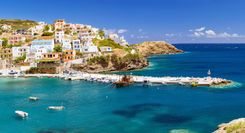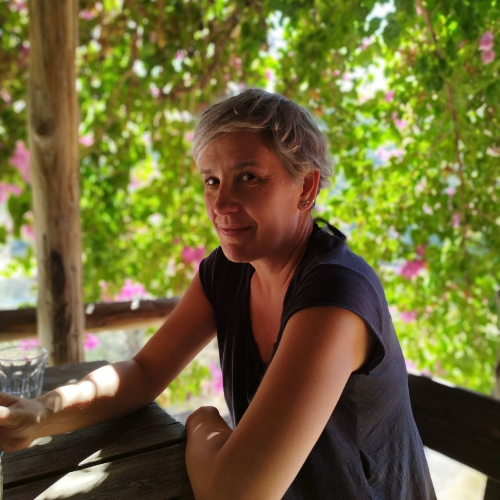7. Canyoning in Tsoutsouras
Canyoning in Tsoutsouras is one of those things that gets you out into the quieter side of Crete. It’s down south, away from the crowds, and you move through a limestone gorge with waterfalls, pools, and narrow passages that keep changing as you go. It’s not just scenic—there’s plenty of movement too: climbing, rappelling, swimming, and sliding through natural formations.
Local guides handle the safety side and provide the gear. You’ll get a full briefing, and most people in decent shape, including kids from around 12 and up, can take part (see our guide to Greece with kids for some tips).
It takes around four hours to go from top to bottom, and it gets more interesting the deeper you go. The last stretch opens right onto the Libyan Sea, and most people end the trip with a swim in the saltwater.
8. Chania's Old Town
Chania’s Old Town is one of the best things to do in Crete if you just want to walk with no plan. It’s full of winding streets, old buildings, and small places to eat or grab a drink. You’ve got layers of history here—Venetian, Ottoman, and modern Greek—all sitting next to each other.
The harbor is the easiest landmark to start from, but if you head away from the waterfront, you’ll find tucked-away courtyards, little churches, and people still living and working in buildings that have been around for centuries. There’s a covered market that’s still used by locals for groceries, herbs, and other everyday things.
It doesn’t feel staged or overdone. It’s busy in summer, sure, but if you keep walking past the crowds, you’ll find quieter corners where the rhythm of daily life still comes through. Even in the busy season, it’s possible to find quiet corners. See our Greece travel tips for more about the high and low seasons.
















